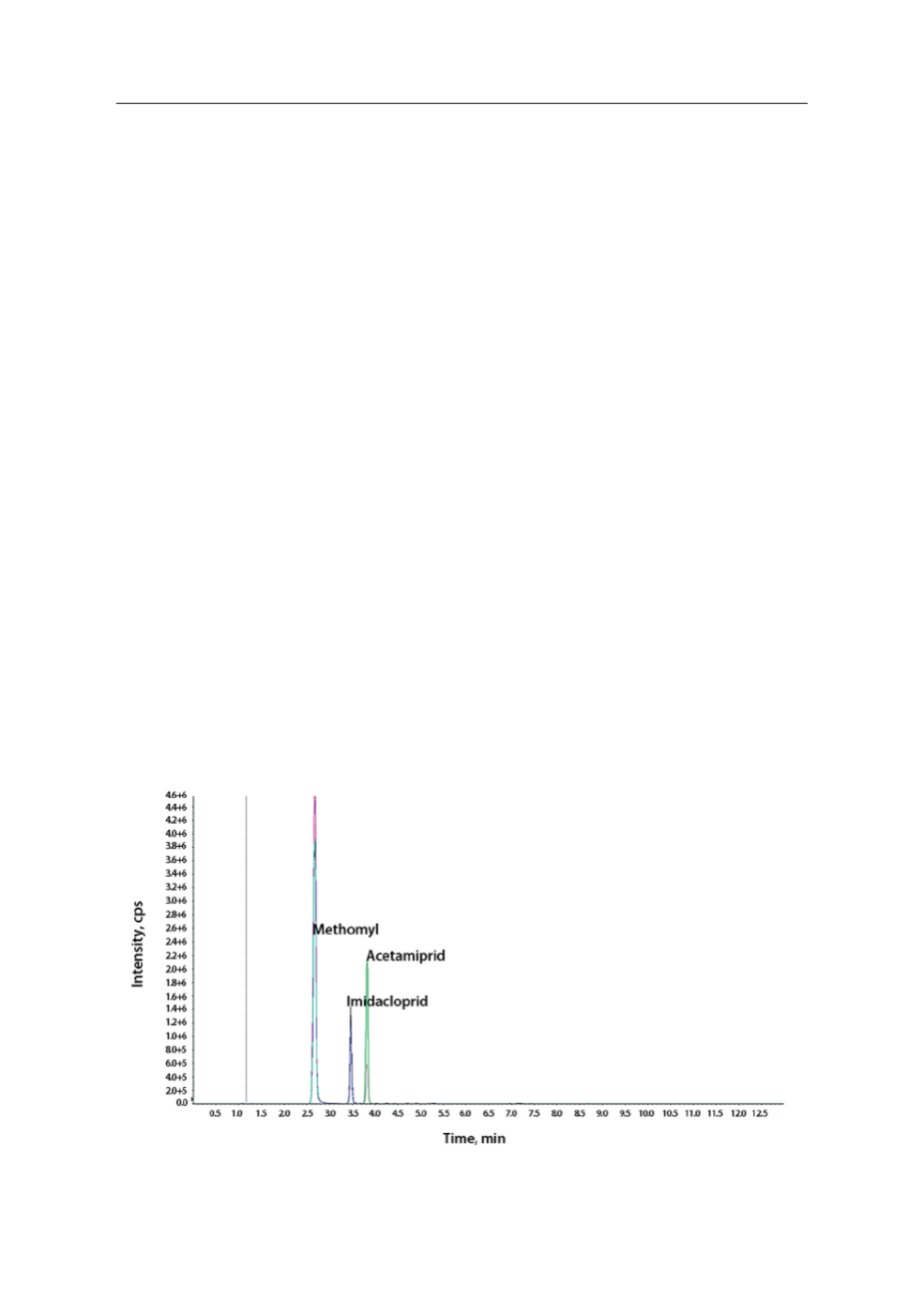
© Benaki Phytopathological Institute
Al-Rajab
et al.
54
tic glass blender 1.8 L (Moulinex, France).
For each sample, three homogenized sub-
samples of 150 g were transferred into a 250
mL amber glass bottle with cap and stored
at -20
o
C until analysis by the end of field ex-
periments. In order to determine the pesti-
cide residues, frozen samples were placed
inside a field cooler and shipped frozen to
an accredited lab (Australian Laboratory
Services, Dammam, Saudi Arabia). The pes-
ticide residues were extracted from a ho-
mogenized sample with 1% acetic acid in ac-
etonitrile (QuEChERS procedure) according
to the method described by Anastassiades
et al. (2003). The extract was analyzed by liq-
uid chromatography with mass detection
(LC-MS/MS) as described by Anastassiades et
al. (2003) and EC (2007). The calibrated range
of the method was 0.01-0.2 μg ml
-1
, which
equates to 0.01–0.2 mg kg
-1
in the sample
(0.02–0.4 mg kg
-1
in the dry samples). The re-
tention times were 2.68, 3.46 and 3.85 min-
utes for methomyl, imidacloprid and acet-
amiprid, respectively (Fig. 2). A recovery test
for the extraction method of insecticides
was made separately in 3 samples of untreat-
ed qat leaves (collected from the control plot
trees) spiked with a known amount of each
insecticide. A blank of untreated qat leaves
was extracted at the same time as control.
The recovery rate was acceptable with val-
ues of 101.2±3.1%, 98.3±2.7% and 94.6±1.2%
of the initial amount for imidacloprid, aceta-
miprid and methomyl, respectively. None of
the investigated pesticides were detected in
the samples collected from the control plot.
Data analysis was conducted using Mi-
crosoft Excel 2002 (Microsoft Canada, To-
ronto, ON). Dissipation curves were plotted
using SigmaPlot (Version 10, Systat Software
Inc., Chicago, IL). The half-life of each insec-
ticide was calculated separately using the
equation of first-order rate, as described by
Gupta
et al.
(2008).
Results and Discussion
The initial concentration of imidacloprid res-
idues in qat leaves was 6.2 mg kg
-1
. Its deg-
radation then approximated first order (r
2
=
0.95); 37 days after treatment 10.65% of ini-
tial residues remained in the qat leaves (Ta-
bles 2 and 3). The wash of insecticide with
rain was negligible because of the low pre-
cipitation after its application (Fig. 1). Itoiz
et
al.
(2012) reported similar initial residue con-
centrations of imidacloprid in lettuce leaves
of 5.97 mg kg
-1
, which then declined to 0.69
mg kg
-1
14 days after application. Persistence
Figure 2.
Representative LC-MS/MS chromatogram for standards mixture of imidacloprid, acetamiprid and methomyl.


